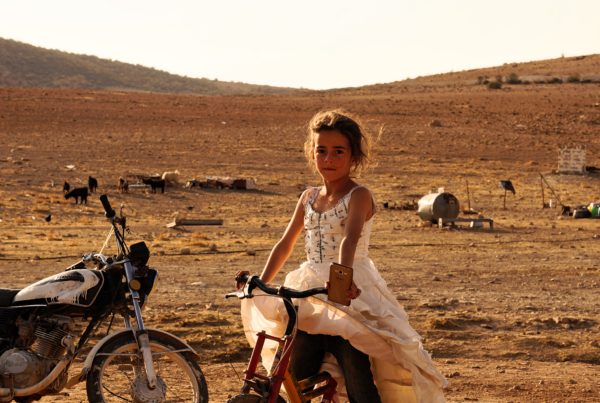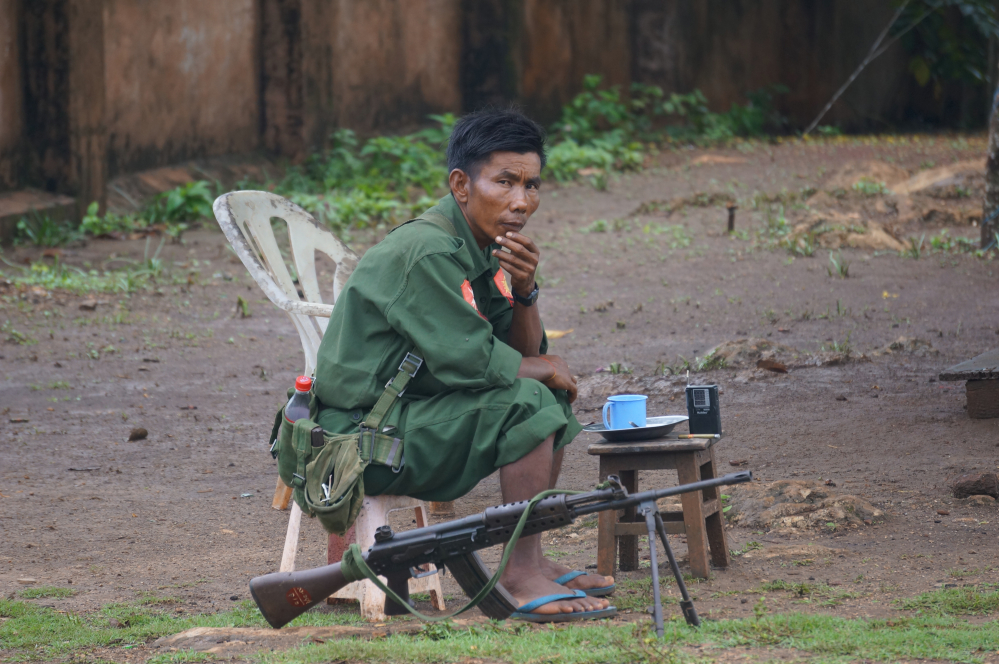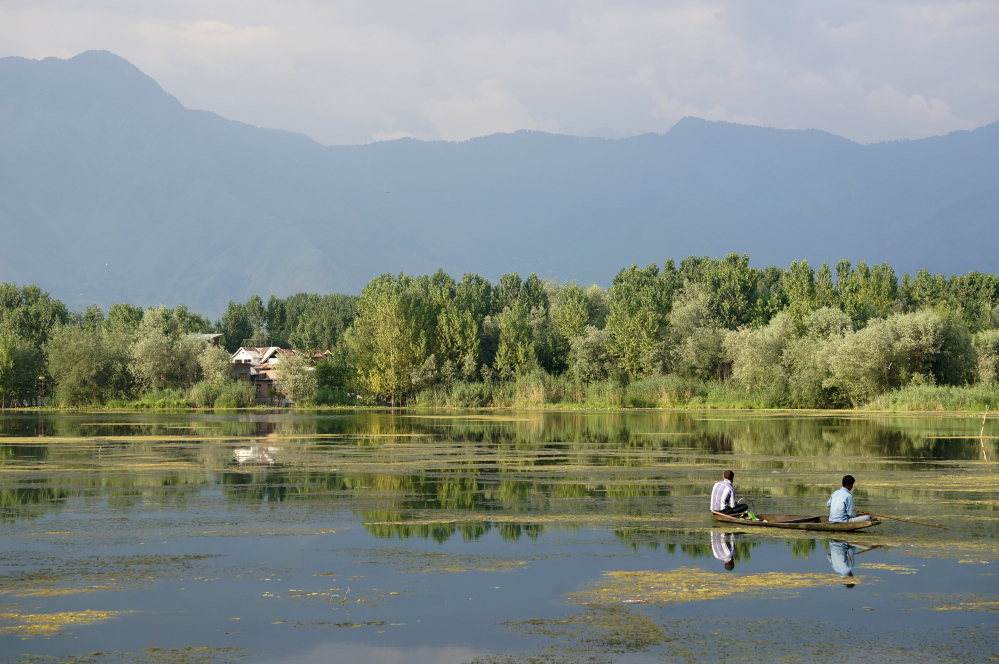This is Part 2 of my series on Post Civil War Sri Lanka. To catch up on part 1, click here.
I speak to Lakshan Dias, a human rights lawyer of Sinhalese ethnicity based in Colombo, about whether civil war tension remains in the north.
“If you are a political activist and you believe in self-determination rights of the Tamils and equal treatment then you can still be seen as the enemy. But if you believe that reconciliation is on the way and you agree with the state then you are not a threat,” Dias says.
The Prevention of Terrorism Act, initially introduced as emergency legislation in 1979, is still in force permitting detention without charge for up to 18 months of suspected terrorists. Amnesty International’s 2015/2016 report on Sri Lanka accounts for arbitrary arrests and detention of Tamils suspected of links to the LTTE under the Prevention of Terrorism Act (PTA) which “shifts the burden of proof onto a detainee alleging torture or other ill-treatment”. That same report also describes cases of torture and other ill-treatment of detainees (including sexual violence) as well as deaths in police custody.
“If you are a Muslim, if you are a Tamil, you cannot have a political stance,” Dias says. “You must be careful of the army, of the Criminal Investigation Department, of the Terrorism Prevention Department. You might be charged under the Prevention of Terrorism Act. Or you may be accused of trying to regroup the militants. Or you may be charged with linking yourself with the diaspora. You might be charged for 20 years or 100 years.”
Penny, a Sri Lankan researcher based in Australia, has returned to her home country a few times since the end of the civil war to investigate what is happening to the Tamil people. She prefers to use a pseudonym to protect her identity and I’m not allowed to directly quote her research. She is worried about the repercussions for people speaking to me.
“It is very easy to find out who gave you the interview in Sri Lanka as everyone knows each other and easily say, ‘Yes I saw this man with a foreigner’. So many foreigners, journalists NGOs have misused the identity of these innocent people for their articles and win awards and those participants are no more alive.”
Needless to say, everyone I quote in these articles has had their name and details anonymised.
I spoke to many Tamil people in northern Sri Lanka who remain unhappy with the current state of affairs. Nagaveeran works as an editor of Uthayan, a Tamil newspaper based in Jaffna. He speaks slowly and deliberately, carefully choosing his words.
“You cannot say the war is over,” Nagaveeran says. “The armed conflict ended in 2009 but the reasons for why the war started remain. We are still discriminated against. People are still being intimidated by CID [Criminal Investigation Department] and military. The community are still traumatised.”
There are bullet holes in Uthayan’s office walls from a shooting in 2006. Shattered computer monitors from the same shooting are on display. Despite the war ending in 2009, attacks on the media continued until as late as 2013.
“The government will not release information identifying the deaths of Tamils during the war,” Nagaveeran says. “Families don’t know whether to mourn the dead or hope that their loved ones are still alive. The government claims there are no secret prisons. Maybe they were closed down, maybe they’re still open, maybe everyone inside them was shot. We don’t know. We don’t know what has happened to our loved ones. There are hundreds of Tamil wives, young and old, who cannot move on because they hope their loved one may return.”
I am taken to a small home in Jaffna. William and his daughter, Meelee, sit on two chairs opposite me. When they talk they smile even though we are discussing the disappearance of William’s two sons six years ago. William originally gave me permission to record their story and take photographs of the family to help raise awareness about his missing sons, but considering the risks that such a story might bring them, I have decided to anonymise the family and not use the photos.
“We were displaced by the conflict in Jaffna in 1995 and didn’t return to our homes until April 2009,” Chanka translates for me. “Paul was 27 at the time of his disappearance. He joined the LTT in 1998 when he was sixteen.”
His brother, Safi, was 19 at the time of his disappearance. He was a keen sportsman, a footballer and a cricketer, and he loved to draw. He was forced to join the LTT in January 2009 in an area under the control of the Sri Lankan army.
“Members of the public told us they had last seen them in Vavuniya district in May 2009,” William says.
At the time of their disappearance, the Sri Lankan Army was allegedly taking people believed to be affiliated with the LTTE into custody. Many individuals who had fled from Vavuniya allegedly surrendered to the Sri Lankan army at that time.
“My mother physically went to the 32 camps under government control in Vavuniya but they were not there,” Meelee says.
The family reported the disappearance of their sons to the United Nations Humans Right Commission in Vavuniya. Their report is garbled and incorrect in parts. In November 2014, the family received a letter from the UNHCR (written in English which they couldn’t understand) reporting no progress made.
People who purported to be CID came to the family to ask questions about the boys every year after their disappearance. The family never asked for identification because they were too scared. The family have no knowledge of where they might be or what happened to them.
“We think they are in a secret government camp or a secret jail. This is everyone’s belief who has a person disappeared,” Meelee says.
Their story is just one in thousands. According to Amnesty International, in 2015, the Presidential Commission to Investigate into Complaints Regarding Missing Persons received 18,586 reports of missing civilians, “but made little progress in clarifying their fate or whereabouts or bringing perpetrators of enforced disappearance to justice.”
Uthayan editor, Nagaveeran, states that there have been some improvements in Sri Lanka for the Tamil people, but these are always book-shelved by setbacks. The repairing of infrastructure, roads, and train lines in the north immediately after the war does not impress Nagaveeran.
“It’s their job. We are citizens. These are necessary for our people. We fought for an independent state because we weren’t equal. If they fought so hard to keep us as citizens they need to treat us equally.”
The infrastructure reconciliation efforts didn’t stretch far from Jaffna. Nava and his wife Prithi, Chanka’s grandmother, have lived in a coastal village in the north of Sri Lanka for the past nine years. The ruins of war can be found on every street. Inside one of the bombed out homes a child stares out at me from behind a washing line.
“It is six years after the war and houses here are still destroyed,” Nava says. “There has been no development, no compensation. Do you think this would be the case in the south? There has been no investment because they don’t care about us. They returned some land to the Tamil people but it was jungle and they didn’t provide any financial assistance. We are middle class and our house in Jaffna is in ruins and we can’t do anything about it. What about the low class? How can these people rebuild after the war? How can they earn a living without help?”
The improvements in infrastructure have a more sinister feel when linked to a report by a US think-tank, the Oakland Institute, which claims that 160,000 government troops occupying the north and east of Sri Lanka are expanding property developments, construction projects, and business ventures on land seized from now–internally displaced peoples.
I spend a strange night alone at the Thalsevana Seaside Resort, which offers tourists an expensive chance to sleep in a military base.
“That was Rajapaksa’s land. He stole it and now they’re using it as a holiday resort,” Nava says contemptuously.
It is part of thousands of acres of Tamil land taken during the war, according to Uthayan editor, Nagaveeran.
“Most of the taken land was agricultural or coastal land which meant farmers and fishermen lost their livelihood. Ports used by the Tamil fishing industry were taken by the military and they have not been returned. The military fish and grow crops but the Tamil industries are suppressed.”
I find Konapalam, one of the many Internally Displaced People (IDP) camps in the Jaffna area, in amongst ordinary Jaffna streets. Dusty, tin homes separated by narrow alleyways of palm leaves. Many of the people in Konapalam camps are originally from fishing areas now occupied by the army. Many of the people have been in the camp for over 25 years. I meet a family of three daughters, aged sixteen, thirteen, eleven, and one son, aged nineteen; all born in Konapalam. The son is in hospital after a building collapsed on him.
“We are waiting to be sent home,” the mother tells me.
Reports say there are still over 30,000 Tamils residing in IDP camps in the Jaffna area waiting to be resettled.
In the third and final part of my series on Sri Lanka, I look at the accusation that Sri Lankans coming to Australia by boat are economic migrants, I talk to asylum seekers who returned to Sri Lanka after asking for protection from Australia and I discuss the hope for a brighter future for Tamils in Sri Lanka.


